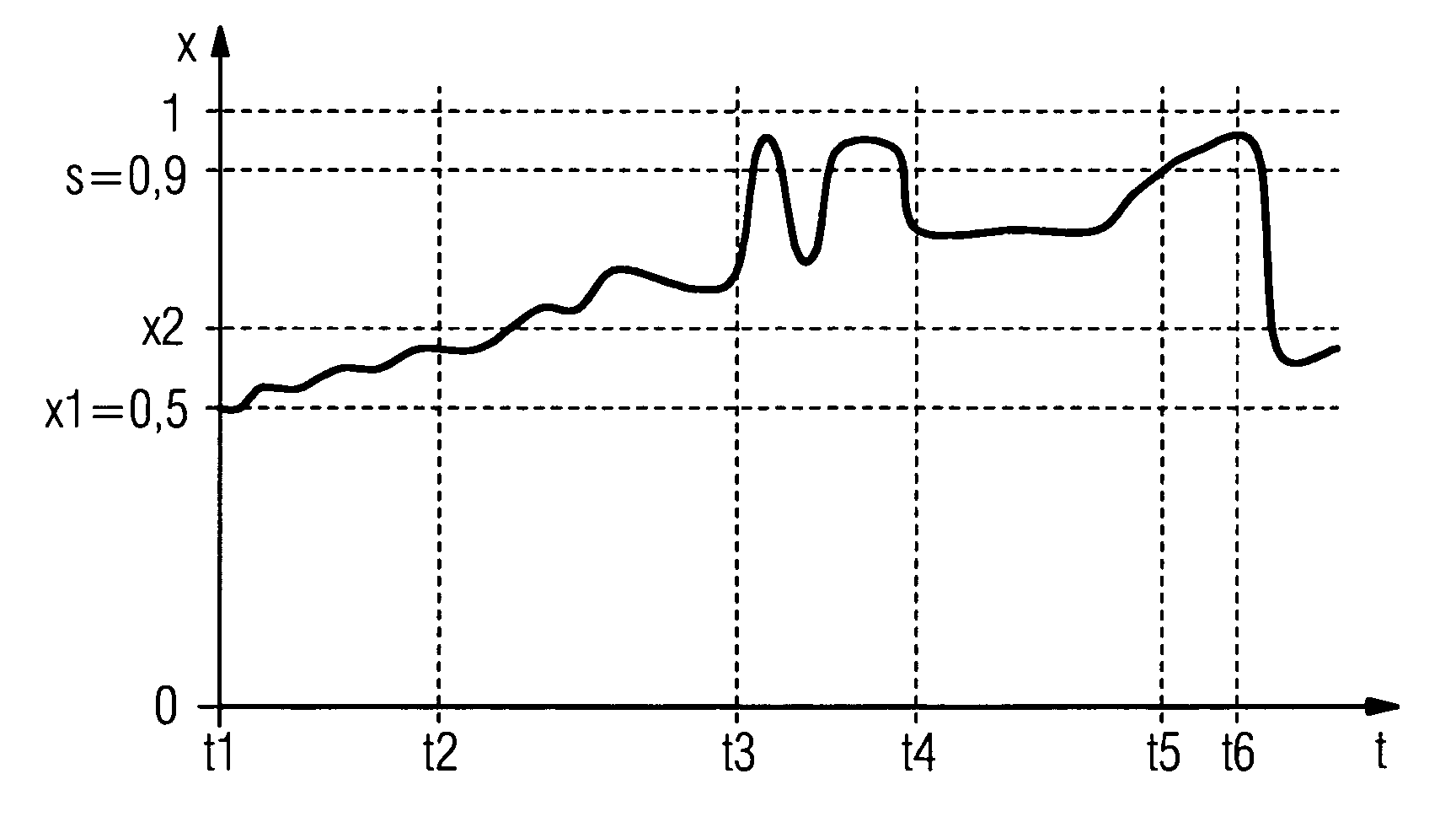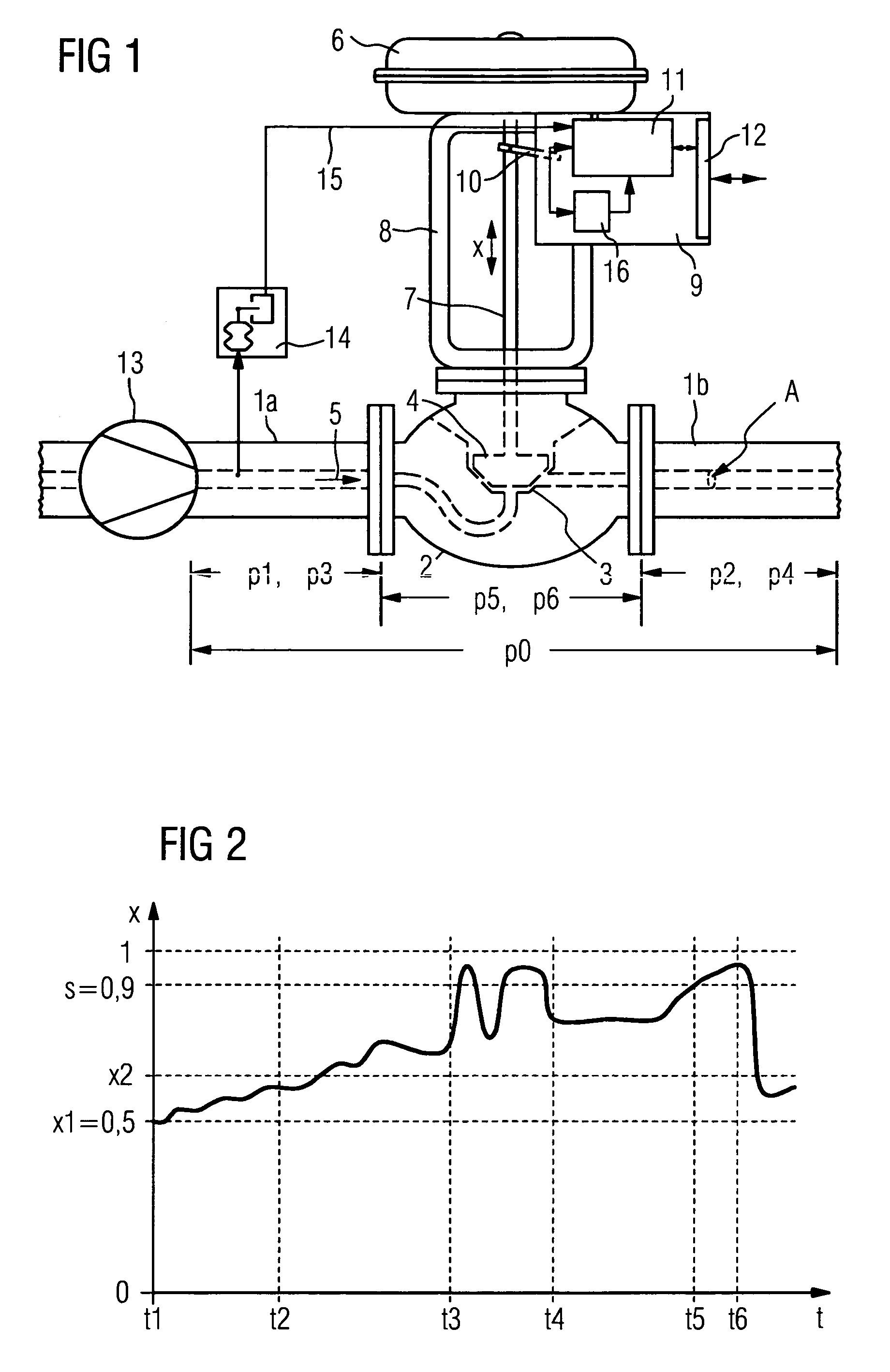Method for monitoring a pipeline and position regulator for a control valve
a technology for controlling valves and pipelines, which is applied in the direction of valve operating devices, service pipe systems, water supply installation, etc., can solve the problems of sudden blockage of the flow through the pipeline, significant effort, and production outages and associated significant costs, so as to avoid operational faults or production outages, the effect of slow reduction of the free internal cross section of the pipelin
- Summary
- Abstract
- Description
- Claims
- Application Information
AI Technical Summary
Benefits of technology
Problems solved by technology
Method used
Image
Examples
Embodiment Construction
[0020]In accordance with FIG. 1, a valve 2 is built into a pipeline 1 with pipeline sections 1a and 1b of a process control system not shown in any greater detail, which by a corresponding lift of a closure element 4 operating in conjunction with a valve seat 3, controls the throughflow of a medium 5. The lift is generated by a pneumatic drive 6 transmitted by means of a valve stem 7 to the closure element 4. The drive 6 is connected via a yoke 8 to the housing of the valve 2. A position regulator 9 is arranged on the yoke 8. The relevant position x of the valve is recorded by a position generator 10 and fed to an evaluation unit 11, which compares it with required value fed in via a data interface 12 from a field bus with digital or analog data transmission and on the output side controls the pneumatic drive 6 in the sense of controlling the regulation difference. The required value is prespecified by a controller not shown in the Figure so that an essentially constant throughflow ...
PUM
 Login to View More
Login to View More Abstract
Description
Claims
Application Information
 Login to View More
Login to View More - R&D
- Intellectual Property
- Life Sciences
- Materials
- Tech Scout
- Unparalleled Data Quality
- Higher Quality Content
- 60% Fewer Hallucinations
Browse by: Latest US Patents, China's latest patents, Technical Efficacy Thesaurus, Application Domain, Technology Topic, Popular Technical Reports.
© 2025 PatSnap. All rights reserved.Legal|Privacy policy|Modern Slavery Act Transparency Statement|Sitemap|About US| Contact US: help@patsnap.com


